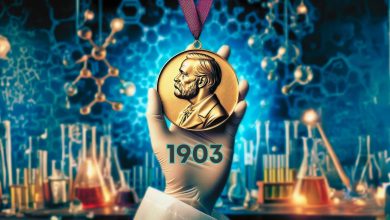
Titanium Sticking to the Rabbit: The Accidental Discovery of Prostheses
The human body is one of the most difficult structures to understand. The reactions of this complex structure to foreign matter are usually not very warm. Our body, which is not very welcoming, almost fights to destroy foreign molecules. We have a scientist who finished this war and came out with a white flag: Per-Ingvar Branemark. Today we’re going to learn the story of this scientist finding the implants and honor the souls of the poor bunnies.
Our Body’s Response to Intruders: We’re not Home!
It is not easy to replace a lost limb with an artificial replacement. As sweet as the newly added limb request, “Please, would you open the door, sir?” but does not receive a very polite answer to the question. For example, when a finger made of any alternative material is replaced by a lost finger, our defense system is activated. Whether it’s gold, zinc, magnesium or chrome-plated, our immune system fights them all and never accepts a new one to replace the lost organ. Groups of blood cells surrounding the foreign material and wrap it in a slippery and fibrous collagen shirt. In other words, it tries with all its power to throw out foreign substances. In fact, this is something that benefits us. For example, it is very useful for bullets left in the body as a result of a hunting accident and increases our chances of survival.
But unfortunately –as we mentioned in our “Why Are Some People Allergic to Certain Foods” allergy article– the cells in our immune system are overprotective. These cells are not successful enough to distinguish between the invading foreign material and the corresponding limb that will benefit us. Therefore, the newly added limb is soon covered with slippery collagen and is thrown out of the body.
The search for substances that would not cause this response had been on the agenda of the scientific world for years. However, even the most promising elements did not produce the desired result.
Exploring the Prosthesis While Looking Inside Rabbits
Now we need to set our time machine to the year 1952. Swedish doctor Per-Ingvar Branemark was studying how the bone marrow produces new blood cells. For this purpose, he began to study the rabbits. He tried to understand the production of blood cells by drilling holes in the hip bones of poor rabbits. He covered these holes with eggshell-thick titanium “windows” that became transparent under strong light.
After noting the results of his observations, it was time to remove the titanium screens. By removing these expensive screens and repeating the same experiment on multiple subjects, he published the results. What was expected was that the titanium window would easily come out of the rabbit’s tiny body. At that moment, Branemark came across that unexpected coincidence. The titanium screen seemed to stick to the rabbit’s veins. It didn’t move as if it was held in a vise.
This coincidence seemed much more interesting than understanding the production of blood cells. From that first moment, he felt the signal that he was going to make a revolution in the field of prosthetics.
The Hypnotizing Element: Titanium
Titanium was an element that the immune system did not see as an enemy. This was unexpected because our bodies didn’t need even trace amounts of titanium. So it was completely foreign to us. Then, it should not even be a good candidate for prosthetics. But science is full of surprises. It is especially difficult to predict and understand the response of our body to chemicals. Upon this coincidence, Branemark discovered that titanium somehow hypnotized our cells.
In fact, this element, number 22 in the periodic table, tricked the body’s osteoblasts, or bone-forming cells, into sticking to it, as if there was no difference between it and real bone.
First Human Subjects: Researchers in the Lab
Of course, it is not easy to say that “Titanium can definitely be used as a prosthesis” after such a discovery. Rabbit subjects were not enough for this. The first subjects were researchers in Branemark’s laboratory. To ensure that the titanium is accepted by the body, Branemark has placed a piece of titanium on the arm of around 20 researchers in his lab. Long-time Branemark researcher Dr. Tomas Albrektsson explained this situation as follows:
“You have to understand. Every man in the lab accepted voluntarily, including my brother.”

Image Source: Wikipedia
Ironically, Dr. Albrektsson was not a subject, saying he was in the control group. In his later statement, he humorously said that everyone who was a subject had a beautiful, tiny scar on their arm. However, the exciting part was that there were no side effects other than the tiny scar that occurred during this insertion. Our body, like the rabbits, saw titanium as a part of itself and embraced it.
Especially dental implants find a solution to the toothache of millions of people every year. This great discovery made a significant contribution to the development of hearing aids, not just prosthetics.
Bibliography and Further Reading
Cochlear Guest Writer Cochlear Americas showcases the stories of real people celebrating life’s real moments. This blog was written by a guest writer for Cochlear Americas. (2017, October 24). The rabbit case or how an accident made bone conduction hearing history. Retrieved May 15, 2021, from https://hearandnow.cochlearamericas.com/hearing-solutions/bone-conduction/the-rabbit-case-or-how-an-accident-made-bone-conduction-hearing-history/
Kean, S. (2011). The disappearing spoon: And other true tales of madness, love, and the history of the world from the periodic table of the elements. New York: Back Bay Books/Little, Brown.
Lewin, T. (2014, December 27). Per-Ingvar Branemark, dental Innovator, dies at 85. Retrieved May 15, 2021, from
https://www.nytimes.com/2014/12/28/health/per-ingvar-branemark-dental-innovator-dies-at-85.html
You can access the sources of the images used by clicking on the images.
The proofreading has been done by Asu Pelin Akköse and Mete Esencan.
Would you like to support us?
- For more detailed information, you can check our “Support Us!” page!










